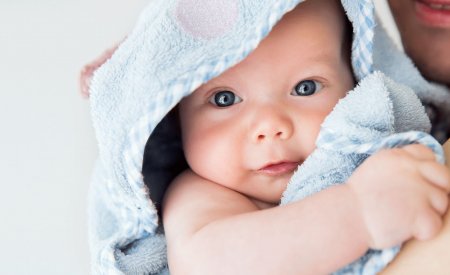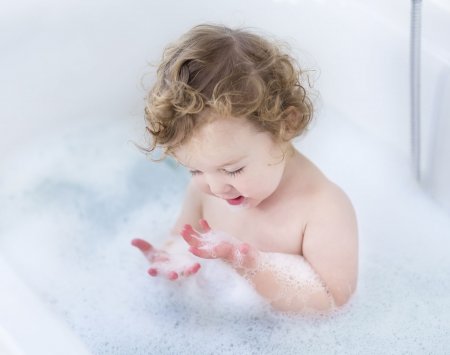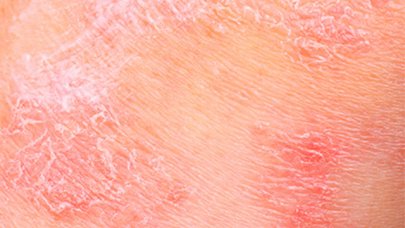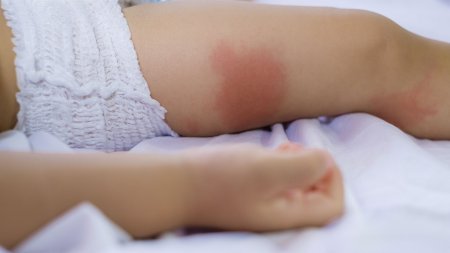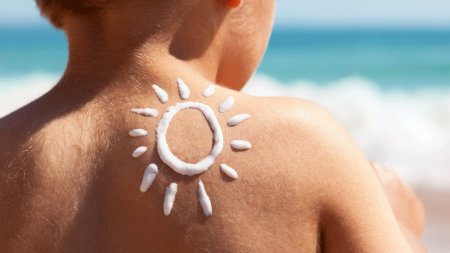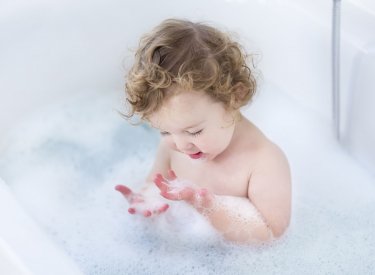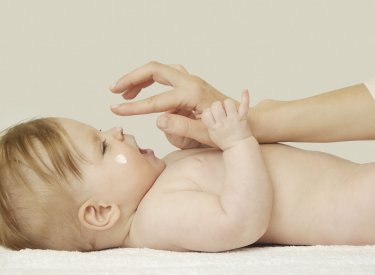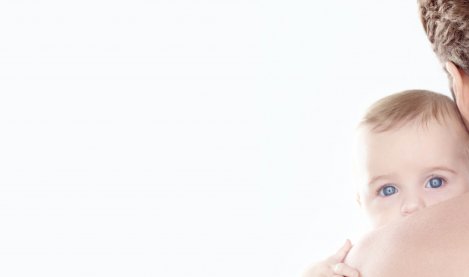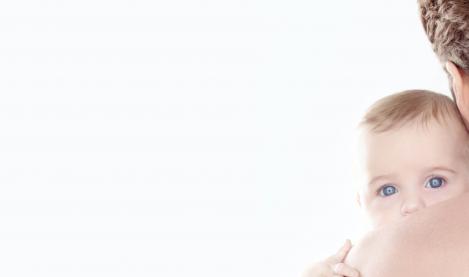Bath time is a special moment - make the most of it!
To avoid stress and haste, prepare everything you need before starting. This will allow you to fully focus on your child during this tender moment. All cleansing and body care products must guarantee safety and tolerance.
For body and hair:
Gently wash your child with an extra-mild, soap-free cleansing product that respects your child’s skin balance and does not sting the eyes.
Gently pat your child dry.
Your child’s scalp and hair should be washed every two to three days. Choose a mild shampoo that does not sting the eyes and respects babies’ skin and hair balance. Gently rinse your child’s hair, making sure the water is the right temperature and the pressure is not too strong. For older kids, why not use a non-rinse untangling spray to facilitate styling?
After each bath, moisturise your child with a suitable product to nourish their skin.
For the face and eyes:
Use cotton wool to clean your child’s face with a mild, soap-free cleansing product. For practical purposes, or simply to avoid hard water, opt for a micellar solution, dermatological wipes or a non-rinse cleansing milk.
For the hands:
Cleansing dermatological wipes will enable you to wash your child’s hands as often as necessary in all situations.
For nappy changing time:
After each nappy change, clean your child’s buttocks meticulously using a mild, soap-free cleansing product to remove dirt, excess water-based paste or protective creams. Gently dry, particularly the folds of the skin. For practical purposes, or simply to avoid hard water, opt for a micellar solution, dermatological wipes or a non-rinse cleansing milk. And for mothers who prefer rinse-off products, use a mild, soap-free cleansing gel adapted to your child’s skin.
